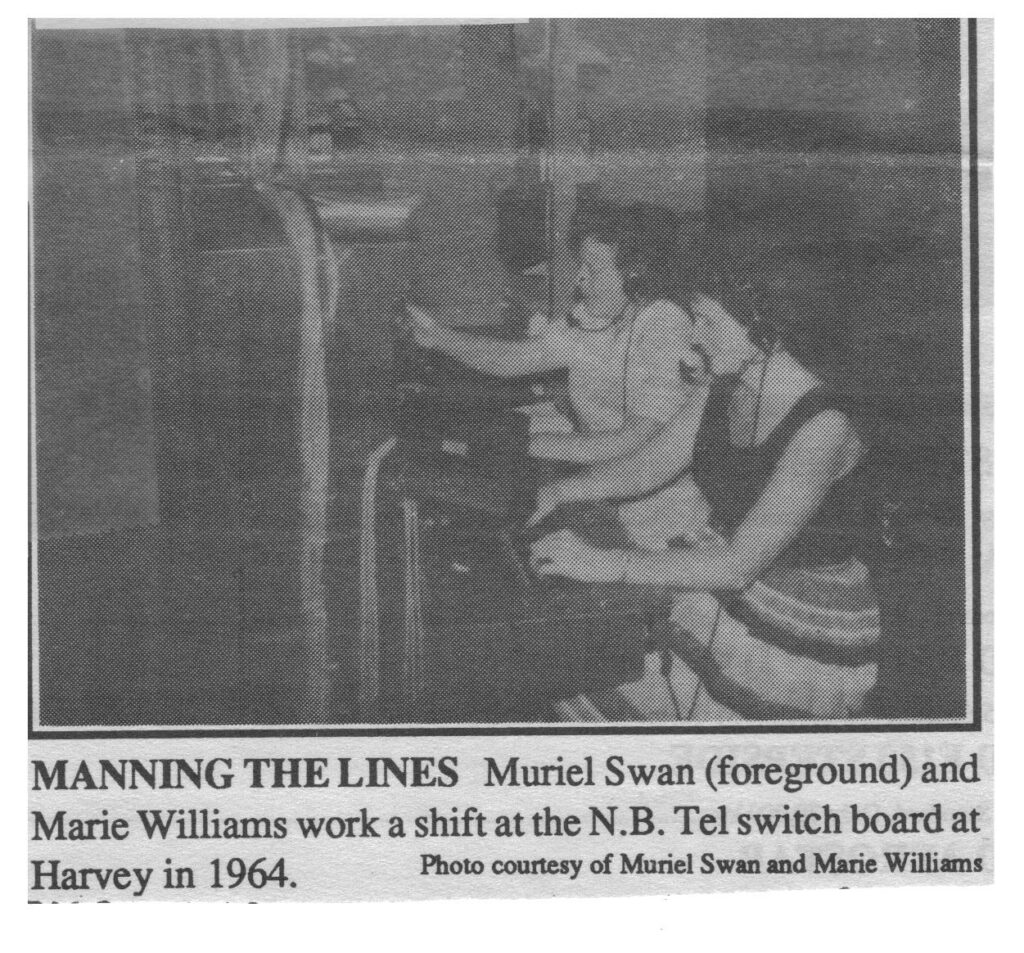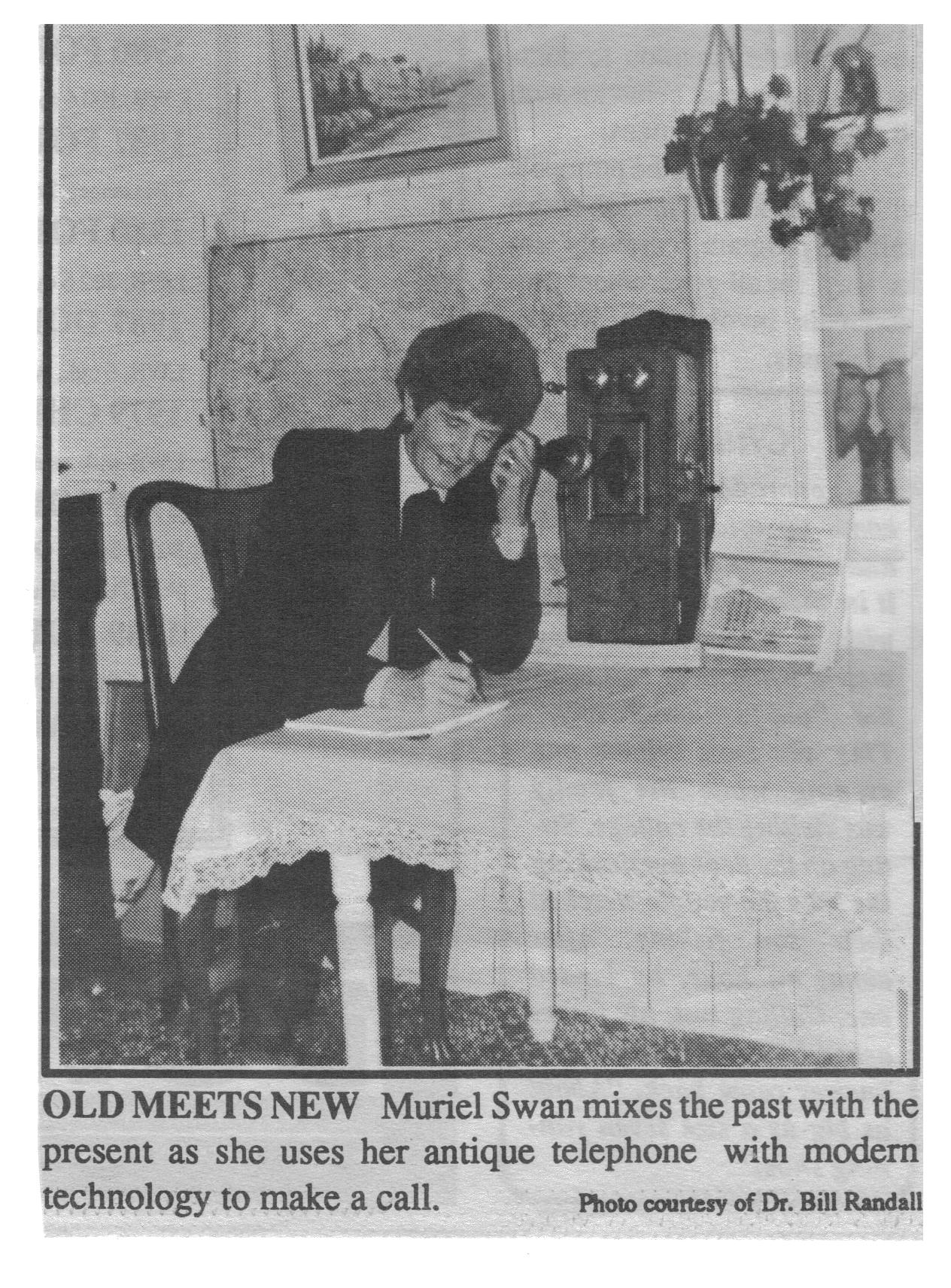By: Rev. Bill Randall
November 16, 1990


During the last year our household has experimented with at least three types of mod em telephones, in the hope that a later model might overcome some of the (real or imagined) difficulties with the present model. I sort of smile to myself, because where I was brought up we didn’t even have a telephone, and when such communication seemed necessary, it was usually a message of emergency. How ever, I did enjoy going over to Annie’s on such an errand, for Annie always had some interesting news to impart…local news that she’d heard through her telephone. Not that many people called up Annie, for she had the reputation as gossip, but she got the news anyway because Annie was a RUBBERER – meaning she “listened in” on the party line. In fact, I sometimes wonder what people like Annie would have done if it hadn’t been for the companionship of that old box on the wall.
Muriel Swan, a long- time employee of the N.B. Telephone Company has graciously shared with me some of the interesting incidents in her years as ‘operator’ in the local exchange.
The Harvey Telephone Company was organized in 1904. Earlier organizations, like the Farmer’s Trading Company, had demonstrated the benefits of lo cal initiatives and cooperation. The Company was made up of Divisions, each division serving a separate settlement which built its own line and was responsible for its maintenance. The share holders in each division had a manager who represented them on the Board of Management. All messages from one division to another were without charge and all divisions paid their portion of the operating expenses. Under this organization, rural lines were constructed from Harvey Station to Tweedside, Brockway, Prince William, Magaguadavic, Blaney Ridge and Lake George. For in stance, the line between Thomas ton Corner and Brockway was built by the Brockway people with J.D. Davis as the Manager of this division. Ernest Vail, a prominent merchant and lumber man at Brockway built a line of his own from his place of business at Brockway to Lawrence Station with a spur through to Flume Ridge.
It was inevitable that such a loosely organized system could not work effectively over a long period of time, and so because of internal disagreements, a new company was formed around 1909, called the York and Charlotte Telephone Company Incorporated. Thomas Robison, hotel owner was one of the chief promoters and a switch board was installed in the store of S.B. Hunter (presently Piercy’s Store) at Harvey and, in July 1910 an agreement was made with N.B. Tel Company whereby the York and Charlotte Telephone Company would run a trunk line circuit from their exchange at Harvey to Lower Prince William on the river and N.B. Tel would run a circuit from the Keswick exchange to connect with it. In 1916, the exchange was moved from Hunter’s Store to the residence of S. Alan Robison and his daughter Mary became the op erator. Dr. Dougan had his own private line so that he could be reached from any division with out going through the operator.
Soon, deterioration of the hastily constructed lines increased the costs of maintenance and so an increase in yearly rentals was imposed. This was bitterly opposed by many subscribers and a number had their telephones removed. The subsequent lack of revenue; continuing maintenance costs; seriously eroded the system until by 1934 the area was practically without telephone service. The N.B. Telephone Co. was invited to come in and install a toll line from Longs Creek to McAdam, which they did in 1934. They also re-routed their St. Stephen-McAdam line by way of Lawrence Station and Brockway, joining the Harvey/McAdam line at Thomaston Corner. The Company’s exchange was installed in a building owned by Frank N. Nalford and a No. 1220 Northern Electric switch board was in stalled, with 100 subscribers.
The normal number of staff was five, and they worked shifts of 8-4 4-12 and 12-8. Suddenly remote Harvey was in-touch with the rest of the world! All you had to do was ring the operator. This person be came a vital link to the world of communication. For example, when the T.V. actor Hoss on the show Bonanza fell off his horse and injured himself, Jerome Smith of Christie Ridge was so moved with compassion that he asked the operator to rush a call through to him so that he could offer his condolences. Incidentally, in the long lonely hours of nighttime, Jerome would sometimes call the opera tors and sing to them to relieve their boredom.
Other subscribers were not always so friendly. One enter prising young man decided about midnight that his business would be much improved if he brought a staunch team of horses directly from Alberta. He urged the operator to put him in touch with such a market though he had no suggestions as to names or numbers. “Just get me a pair of good western horses,” was his plea, and when the confused operator could not succeed, she was only mildly surprised the next morning to see the frustrated would-be-horse-purchaser’s phone sitting conspicuously on the outside front steps – severed wires adding mute testimony to the fact that operators did not always satisfy their customers.
By 1954, N.B. Tel was ready to change the system to dial phoning. Eliminating the local exchange and ending forever the cozy connection with the local operator. Even this was not without humor. Technicians worked all day to change over from Magneto to dial. Finally, after midnight the job was completed, and at a time when telephone calls were slow, the old wires were cut and the new system was turned on. Everyone celebrated and Muriel and Elinor (who was then Chief Operator) remember that they didn’t get to bed till 4:00 AM. At 5:00 AM a loud knock on the door awakened them. A technician bore the sad news that the new system was not working, and would they come back to the switch board and stab blindly at the plug holes hoping to find someone who might be trying to make a phone call. All day long, called the opera tor, “may I help you?”, as they ranged from hole to hole. Finally one customer who must have been futilely trying for hours to get an operator, came through with this somewhat sarcastic remark, “Oh, I’m sorry to interrupt your coffee break, but if you have the time to make this one little call, then you can go back to your knitting.”
Now, if we’re unhappy with the service we can complain but we’ll probably get a recording….and you just can’t vent your frustrations by insulting them, or by yanking your phone off the wall!
To honor these operators, who so patiently served you, let me list a few names. Early Staffers: Mary Robison, Margaret Robison, Violet Halford, Irma Cunningham, Bertha Grieve, Barbara Mowatt, Muriel Embleton, Elinor Holland, Joan Little, Judy McCullough, Barbara Embleton, Aldana Swan, Faye Henry, Coral Hood Nason, Joan Woodcock and Marie Williams and of course Muriel Swan.
NOTE: There will be a meeting of the Harvey Historical Society on Sunday, November 18th at 3:00 PM in the St. Andrew’s United Church Hall. Everyone is welcome.
Source: Rev. Bill Randall’s “From The Scrapbook Vol. One.”
